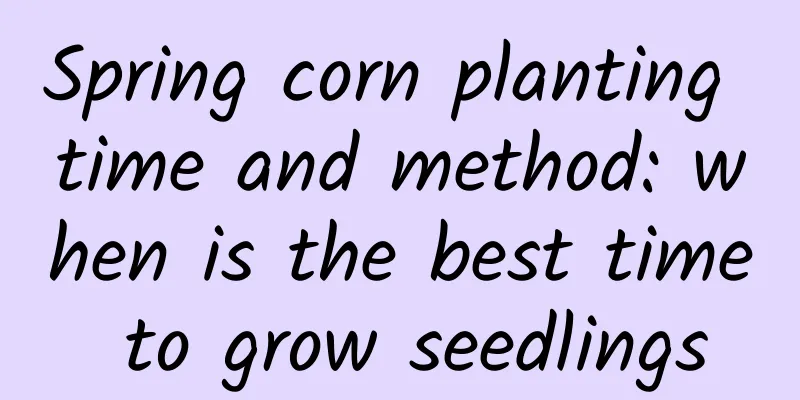How to grow blue mustard

1. Maintenance methods1. Temperature: Blue mustard prefers a cooler environment and has poor resistance to high temperatures. Low temperatures are more conducive to it maintaining a good plant shape, so it is generally suitable for planting in the middle and lower reaches of the Yangtze River. In summer, the temperature should not exceed 25 degrees. You can also cool it down by spraying water mist in hot weather to avoid dehydration and withering. 2. Watering: The soil only needs to be kept moist. There is no need to water it frequently. Too much water will cause root rot. Because the side branches of the blue mustard plant are relatively vigorous, the roots are not well ventilated. If too much water is given and it cannot be absorbed, it will rot and the branches and leaves will deteriorate. 3. Light: Light-loving plants need to maintain sufficient warm light. If the light is insufficient, the number of flowers will decrease and the flower buds will not germinate normally, affecting its growth. However, the strong sunlight in summer is unbearable and shade is needed. 4. Fertilization: Fertilizer soil is more conducive to growth. Sufficient base fertilizer needs to be applied before planting. During the growth period, the amount and frequency of fertilization can be determined according to its growth conditions. However, it is recommended to apply some organic fertilizer to it. Animal manure will allow it to absorb best and its branches and leaves will grow darker and greener. However, when applying fertilizer, you can combine it with watering to allow all the nutrients to penetrate into the soil. 2. Breeding techniques1. Reproduction: Sowing is the main way of reproduction. This method has a relatively short cycle and can be planted on a large area. It is most suitable for general garden planting. You can sow the seeds in spring and autumn, and then pay attention to watering and temperature so that they can germinate in a short time. 2. Pruning: As an ornamental plant in the garden, the height of blue mustard is not too high. The free-growing state is the most ornamental. Excessive pruning will make the overall shape become unsatisfactory, so pruning is not recommended. 3. Problem diagnosis and treatment1. Diseases: Generally there are no serious diseases or pests, but excessive watering may cause root rot, so just pay attention to ventilation. 2. Pests: Pests are relatively rare, but you may be bitten by some insects. You can spray some pesticides on it to prevent it well. IV. Other issues1. Toxicity: It is non-toxic and has a great effect in beautifying the environment. 2. Can it be raised at home? It is not recommended to raise it at home because it requires sufficient ventilation conditions. |
Recommend
How to prune the fragrant vine and how to prune it to the tip when it blooms
Pruning time of vine There are two main time peri...
How to grow Clivia best
1. Watering Clivia has relatively developed flesh...
Is Sichuan suitable for growing litchi trees? What kind of litchi is suitable?
Planting Lychee Trees in Sichuan Lychees can be g...
How to grow honeysuckle
1. Breeding environment 1. Soil: There are no spe...
How to grow Areca palm at home
Growing conditions of Areca palm When caring for ...
Does Snow White Bougainvillea bloom frequently? When does it bloom?
The plant of Snow White Bougainvillea is not very...
How to grow Dieffenbachia more luxuriantly
Dieffenbachia growth conditions Dieffenbachia is ...
Difference Between Daffodil and Hyacinth
1. Different rhizomes The rhizome of daffodils is...
The copper coin grass at home is dying. This is how it can be saved.
What should I do if the copper coin grass is dyin...
You don’t have to go out and buy Ganoderma lucidum at a “high price”. You can buy a bag of fungus for 10 yuan and pick a lot at home!
We all know that the price of Ganoderma lucidum h...
How to propagate the fortune tree by cuttings
The success of the money tree's cutting propa...
How to grow green radish in water to make it more vigorous
When growing green radish in water, change the wa...
How to prune peach blossoms
Cup-shaped crown This pruning method should be us...
How to fertilize lotus
When to fertilize Look at the leaves The water li...
Cauliflower's growing environment and local conditions
Cauliflower Growth Environment and Conditions Cau...









